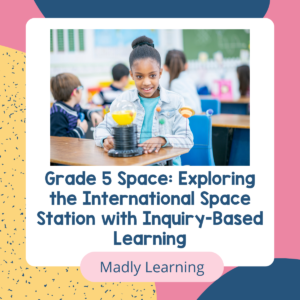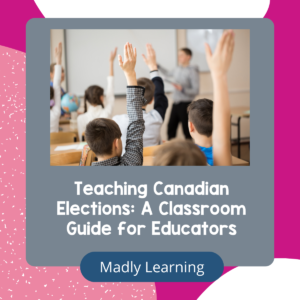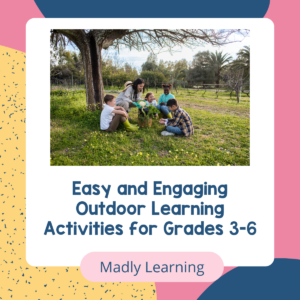Please ignore this blog post if all the students in your class are working at grade level, all have the same learning needs, and there are no special educational needs, mental health needs, or medical needs…..
…. ok good you are still here…
Is this even possible in today’s modern classroom? In all of my years teaching, including my time as an ESL teacher travelling from classroom to classroom and school to school this was never a reality.
Today’s classroom is a complex mix of students with various needs. Therefore differentiation is necessary. Differentiation…the word that made me break out in a cold sweat of panic at the thought of planning separate tasks for all of the needs in my classroom. That was until I realized that differentiation does not mean that the only way to differentiate is by planning multiple tasks for kids. (If you are looking for a more beginners guide to what differentiation is, try this blog post instead!)
Forget about Learning Styles…context is key
ok so this one was a hard pill to swallow in fact I have blogged about learning styles before. As I learn I grow and my teaching transforms. Watch this TED video here. There is no evidence that learning styles are true? Auditory, Kinesthetic, Visual, learning styles are false…they don’t exist? Whoa!! Ok but really I think this is to help us understand and get away from black and white thinking of learning styles. Sure people may have a preference but their ability to learn is not improved when it is presented in one way over another. Therefore you can stop pretending that it does in the classroom. Learning is tied to meaning. Visual and Auditory memory skills may give some students an advantage in some tasks however many of the things that we ask students to do require that they remember concepts and therefore this needs to be presented in meaningful ways. This might explain why my students remember the lesson year after year when I drew a strange (really bad) picture of a deer to demonstrate habitat destruction in the Dundas Valley due to overpopulation. I have tied a concept to a silly memory. It is the meaning and the memory, not the fact that I drew something and said something that is important. The key here for differentiation is to make learning meaningful and in context. Even our students with special education needs need our help to make these connections and concrete examples to help them remember.
Teach on a continuum
If learning is a like a school bus then everyone gets on and off the bus at different stops. The path that that bus takes is the continuum of learning. This concept serves me well in all aspects of the curriculum. One lesson usually does not fit all so simply stop teaching so much. Get students engaged in projects and something that they are interested in by allowing choice and interest to guide them. Then spend your time conferencing and meeting with small groups of students.
Inquiry Based Learning






